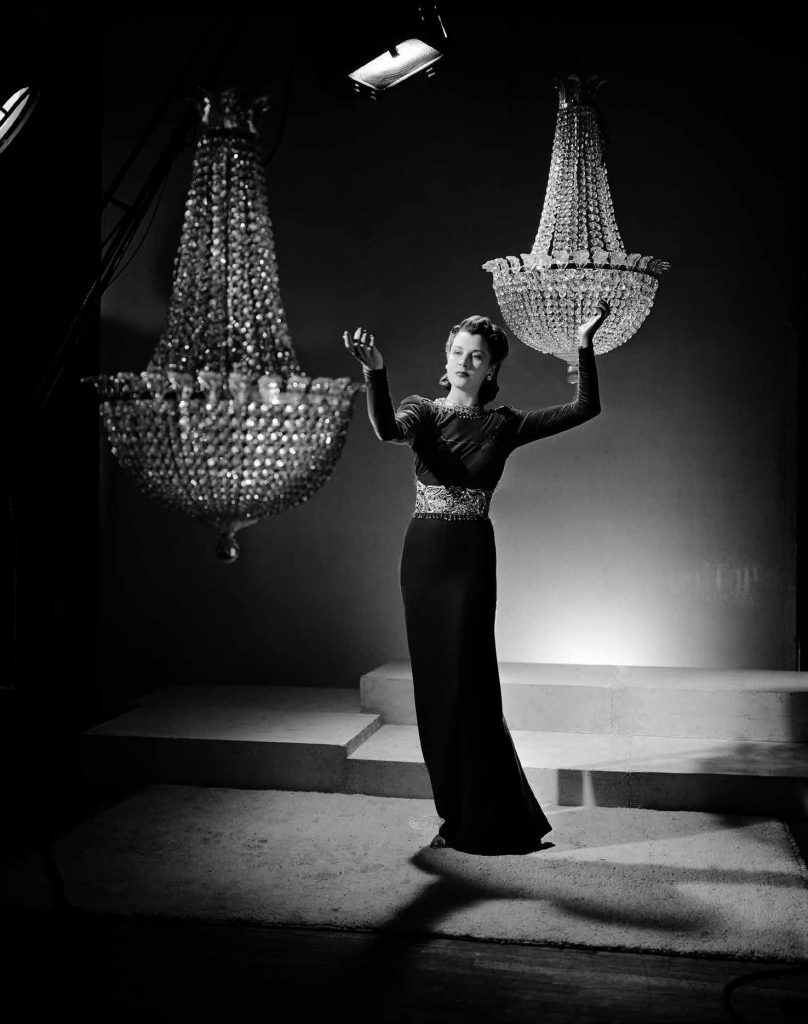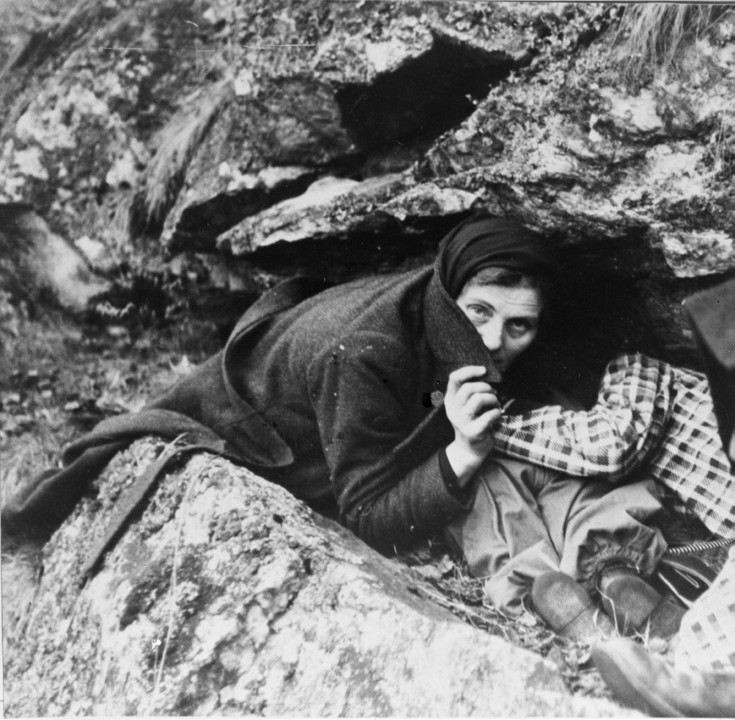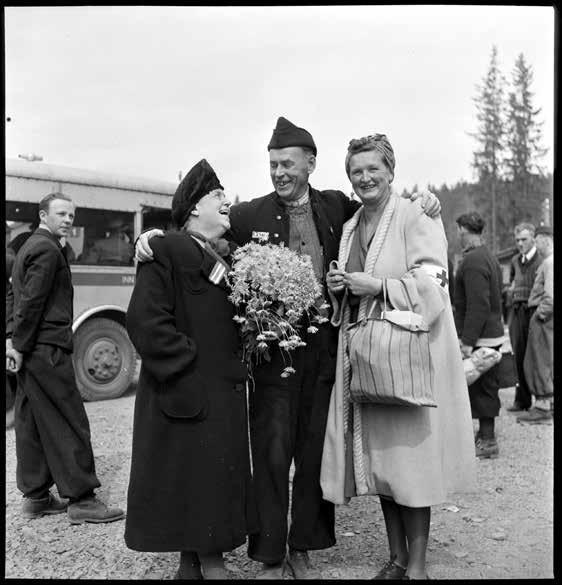(THIS ARTICLE IS MACHINE TRANSLATED by Google from Norwegian)
Wartime 1935-1950 og Lee Miller: War and fashion
Prussian Museum 7.4 – 8.9.19
All of the nine photographers represented in the Preus Museum's new exhibition are women who have documented the consequences of the war armed only with camera. The pictures are rough and striking, but also warm, documentary – some surprising glorifying war. The palette and the theme is wide. The photographers worked on assignments for the press and the military, yet much of their skilled photojournalism and unique propaganda images are forgotten.
The digitization process has reactivated the problem with images labeled 'unknown photographer', or the entire work of life dusted off in the archives. The ongoing research work is constantly revealing the carelessness of history with regard to who or what has been credited. The exhibition's list of partners – the Norwegian Technical Museum, the Labor Movement's archive and library, the Oslo Museum and Tone Svinning – shows how resource-consuming and necessary this work is. The Preus Museum says that there are many other female photographers to choose from, but unfortunately it lacks resources to get their copyright asserted. When it comes to credit, photography seems like a stepchild compared to literature. Now it is part of the story that the photography profession was accepted for women from the 1800th century, and that many in the work for photo agencies such as NTB remained uncredited.

Strong destinies
In the encounter with the photographs that have been brought forward, I am captivated not only by the different qualities of the images, but also by the strong fates presented. The first Scandinavian war correspondent reported Norwegian Gerda Grepp from the Spanish Civil War as early as October 1936. Children and women who were victims of the fascists were photographed and interviewed. This war stood out from others in that civilians were now direct targets. A group of women are standing in the brick mound where the outer wall of the tenement house once was. Above them rise floors with direct access to all homes. The photograph is monumental and simple at the same time.
The single mother Gerda was passionate about socialism and wanted to expose the atrocities via photo reports commissioned by Arbeiderbladet and Agence Espagne. This and her presence during Franco's military attacks in Madrid, Málaga and most recently in Bilbao (Guernica) led to her quickly becoming an international name that was noticed at the time.
The suffering and brutality she witnessed gave her health as great a rupture as the tuberculosis she died of in 1940. Then she was silenced until Jo Stein Moen and Rolf Sæther's book about Norway and the role of Norwegians in the Spanish Civil War, A thousand days, came in 2009.

War and fashion photography
Another well-known war correspondent is American Lee Miller, who worked for Vogue and covered the blitz war in London, the liberation of Paris and the concentration camps of Buchenwald and Dachau. She was one of the first to photograph inside Hitler's apartment after the war, but is well known as a muse and model for, among others, Man Ray. She worked closely with him on developing the well-known solarization photographs. Later, she revolutionized fashion photography by drawing the models out on the street. Violent war experiences should have caused depression and PST. The shock effect of her fashion images taken with war ruins as a background is said by many to come from the war feeds. That these are the fashion images Preus now exhibits gives a broader context to the eight Norwegian female war photographers; the shadow of war extends further into life.
Lee Miller's groundbreaking way of staging fashion testifies not only to her versatility, but also to a finely tuned ability to communicate.
For Miller, it got an expression in her groundbreaking way of staging fashion. It testifies not only to her versatility, but also to a finely tuned ability to communicate. The photograph of the beautiful woman in haute couture in front of a bombed building we can today choose to read as a powerful criticism of luxury consumption against distress and misery. After Miller's death in 1977, her son found 60 photographs and negatives, as well as love letters, documents and much more. In 000 he began publishing from the collection, first in the form of the essayistic photobiography The Lives of Lee Miller.
Front Photographers

As a permanent writer and photographer for Dagens Nyheter, Swedish-Norwegian Alma Braathen went skiing across the border into northern Norway. In the exhibition, she is represented, among other things, with a picture of a guitar-playing soldier surrounded by two locals and a friend by a guard cell. The picture has a spark of life and empathy, as her depictions of the winter war in Finland also have. Both Braathen and Kari Berggrav photographed at the Narvik front, and without their contribution much of the region would never have been documented. Berggrav was also present, among other things, during the bombing of Molde and Elverum; Her photograph of the burning church in Molde smells of fire and annihilation.
The women of the exhibition have documented the consequences of the war, armed only with a camera.
The suffering Berggrev experienced during the bombing affected her so strongly that a couple of years later she could still tell about the atrocities from Elverum in vivid details. Other of the female photographers in the exhibition, such as Kathrine Christie and Sissel Lie, worked for the military. They took propaganda pictures to promote the fighting spirit and keep the spirits up. Lie's picture of three women wearing gas masks where two kiss is iconic. It takes a special ability to include humor, poetry and touches in a war scene.

Elisabeth Meyer's happy release pictures from Grini are more traditional. The exhibition's good flashes are many: Photographs of soup kitchens (Esther Langberg), food queues and food can offer insight into the time of occupation. Rigmor Delphin's two old ladies who bow down to harvest vegetables outside the Adamstuen retirement home are melting hearts.


